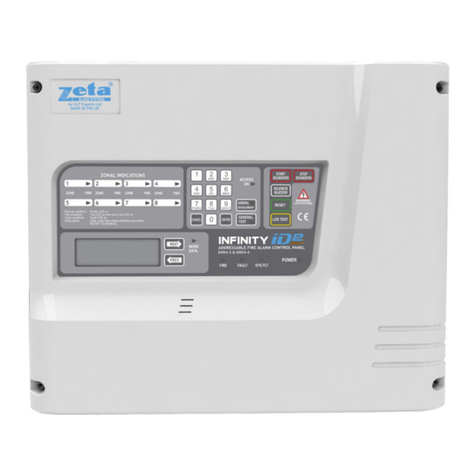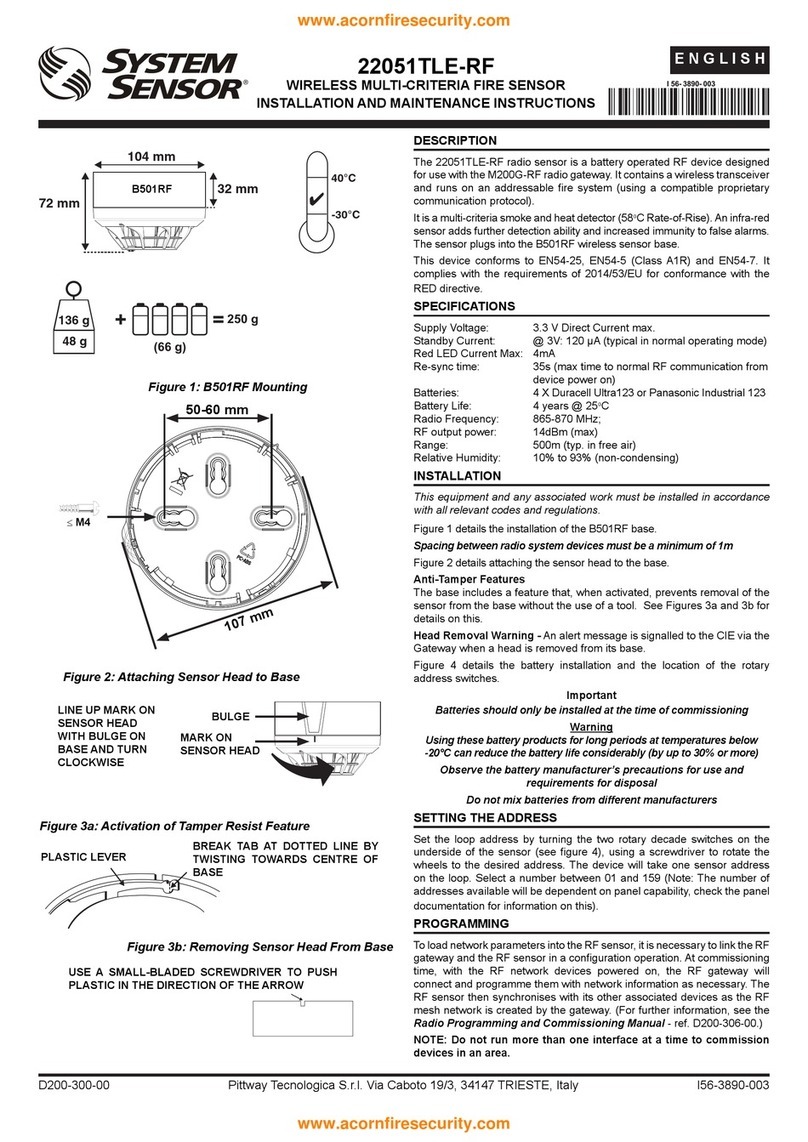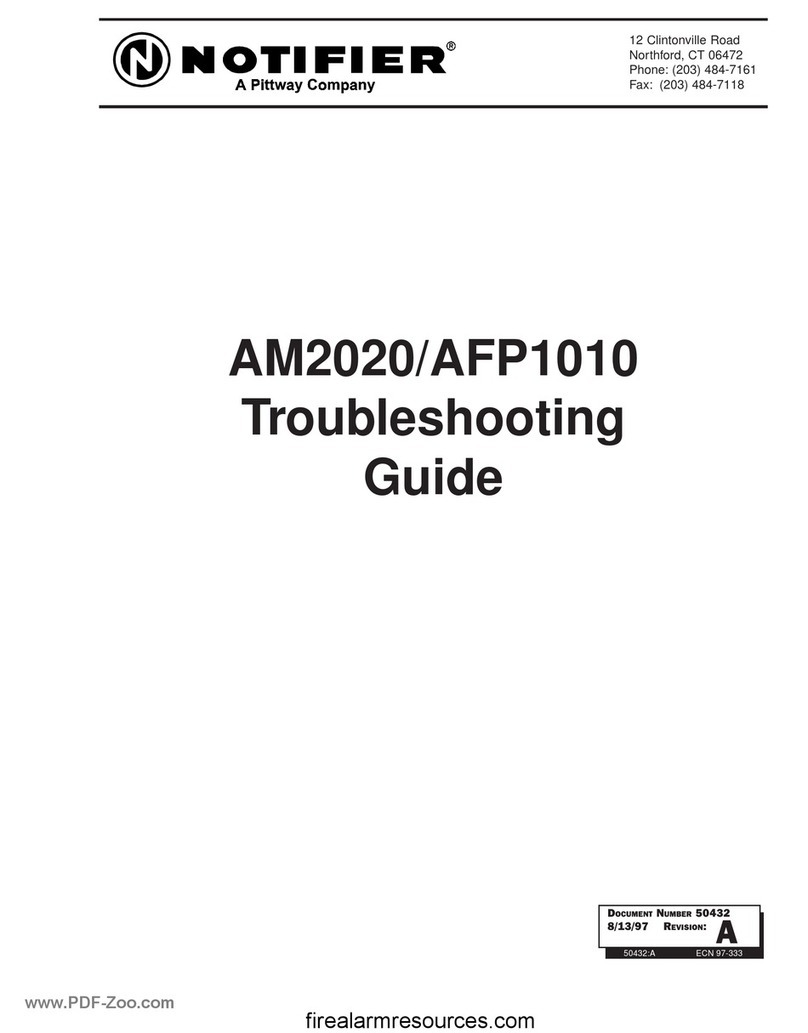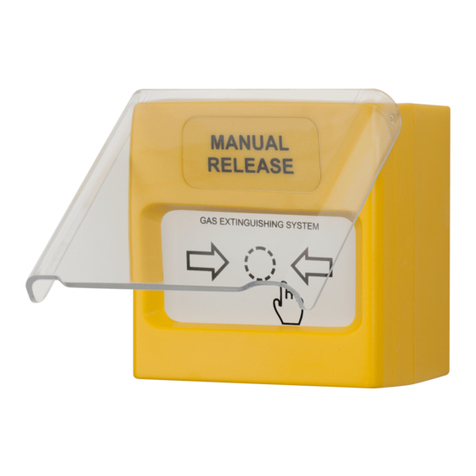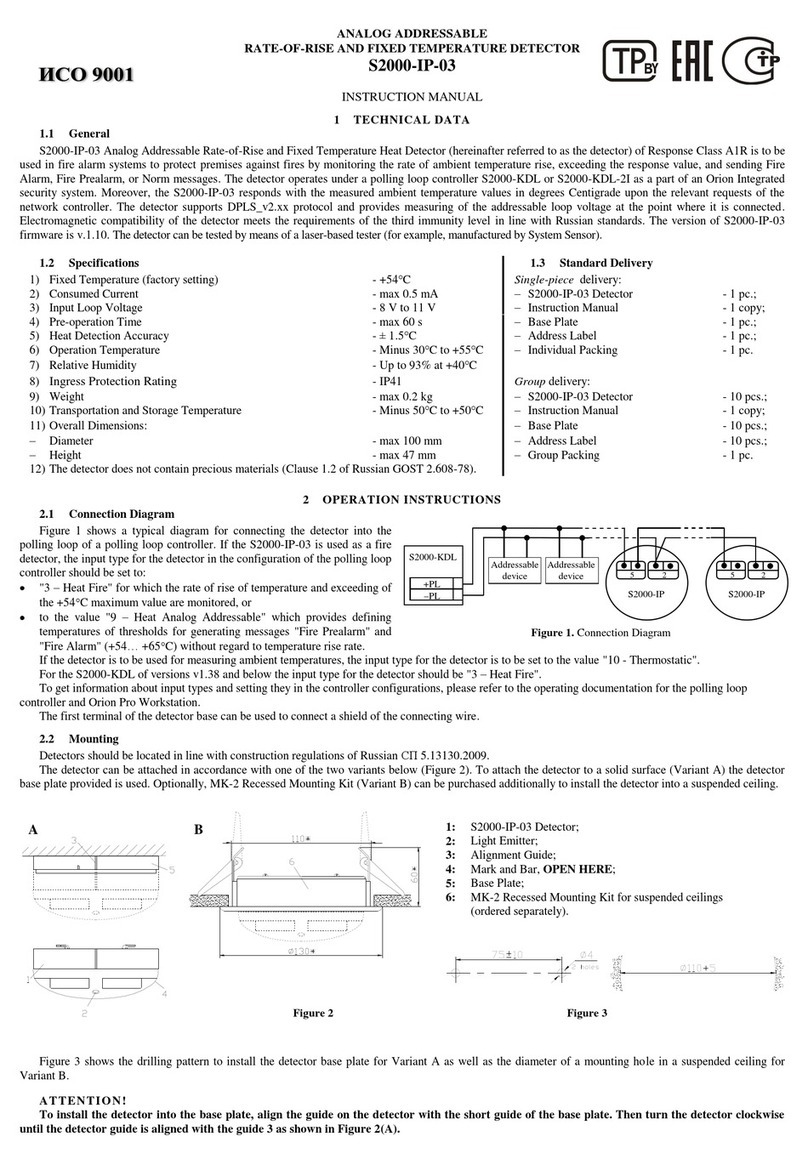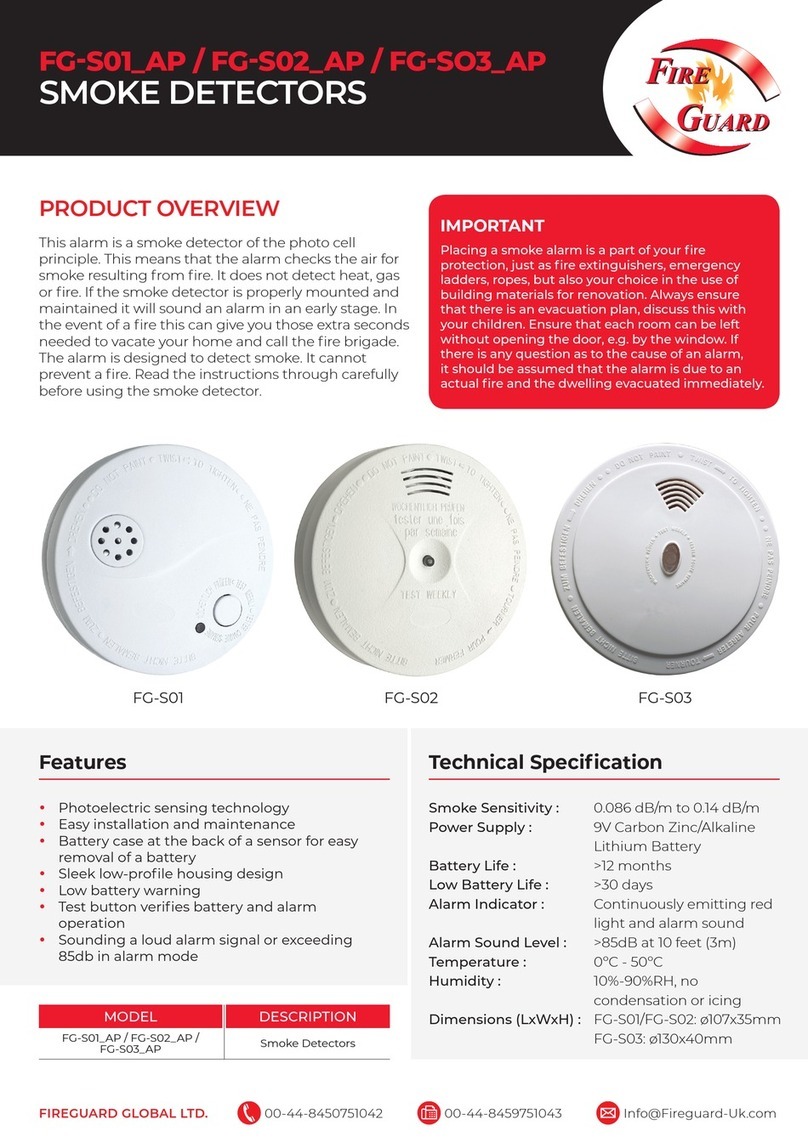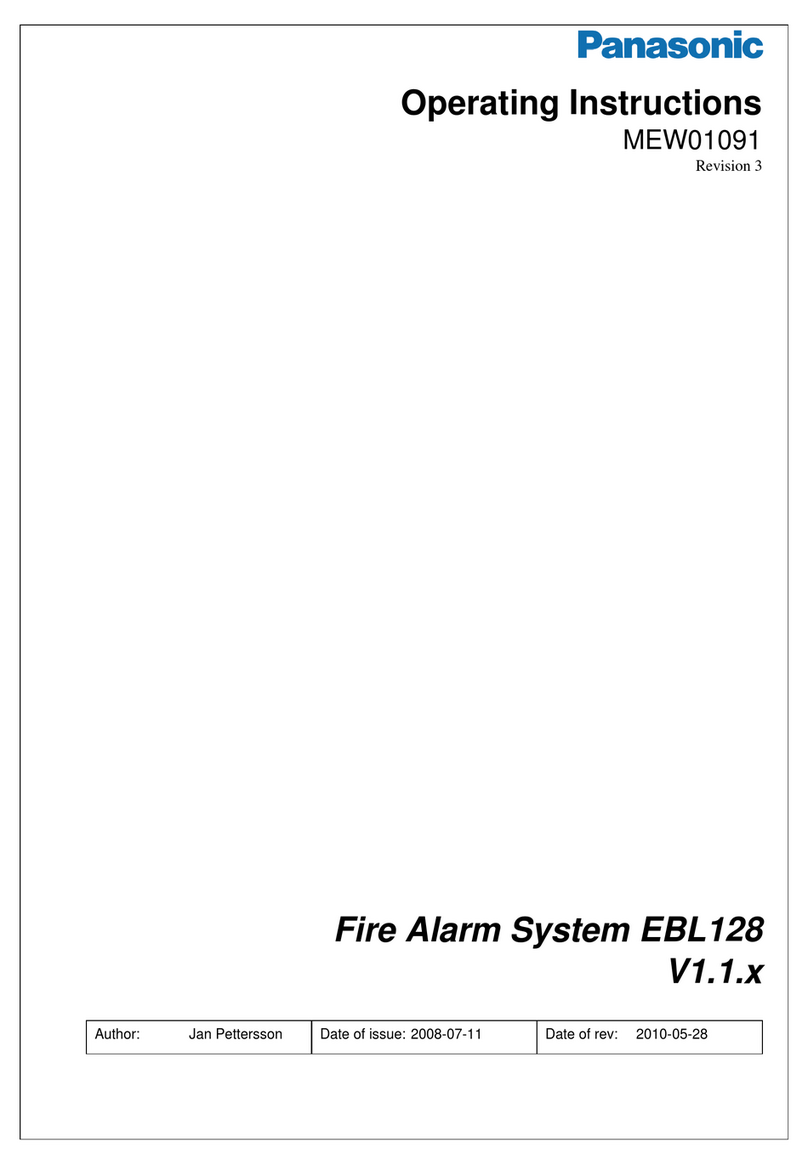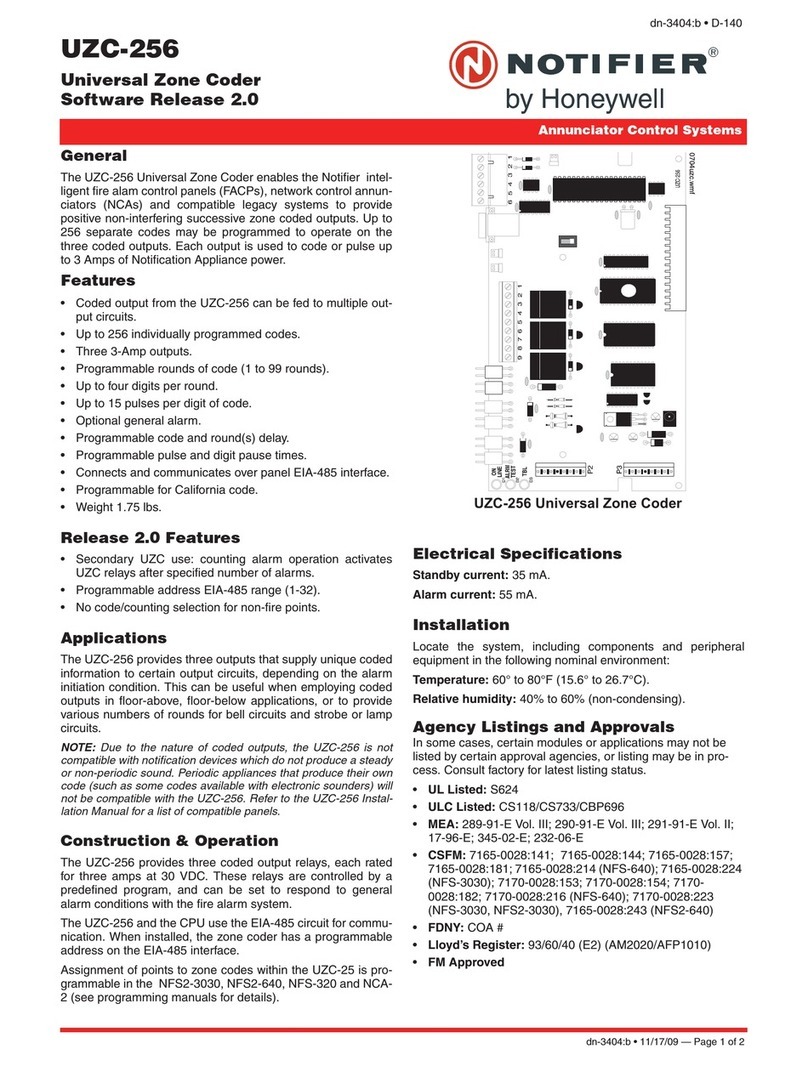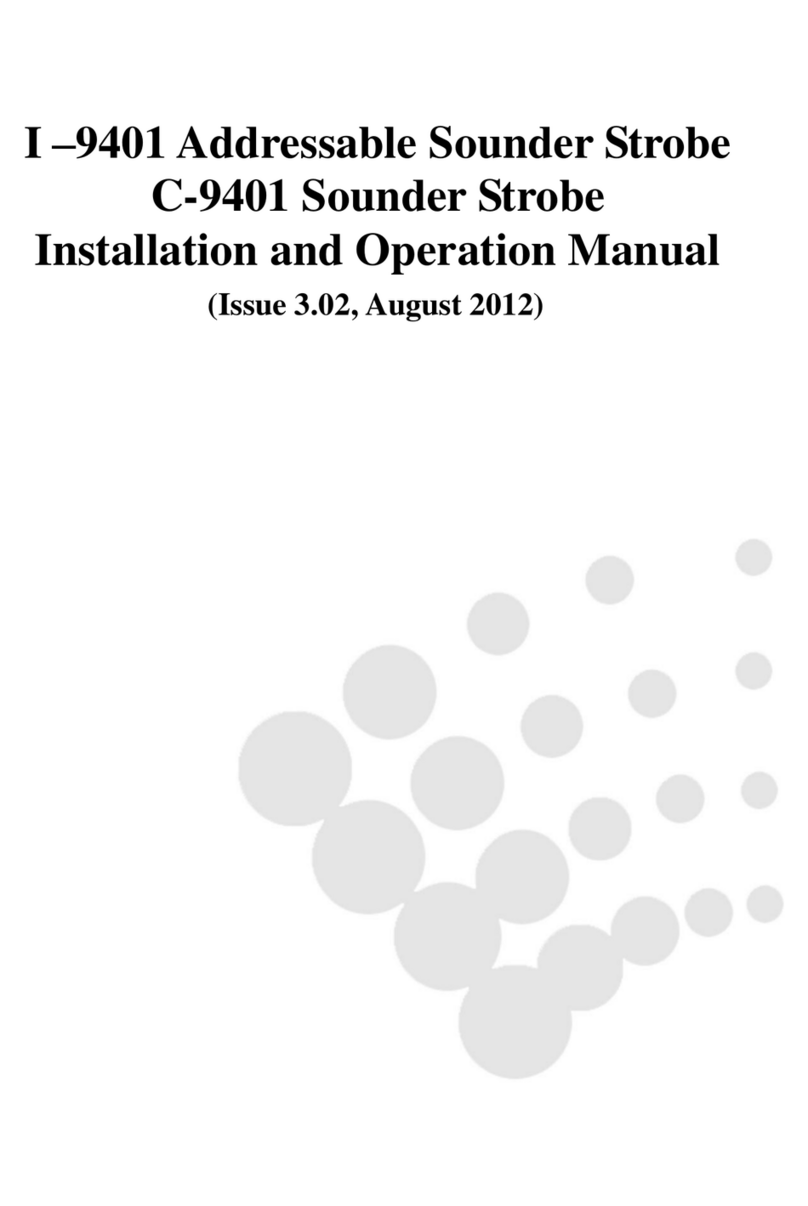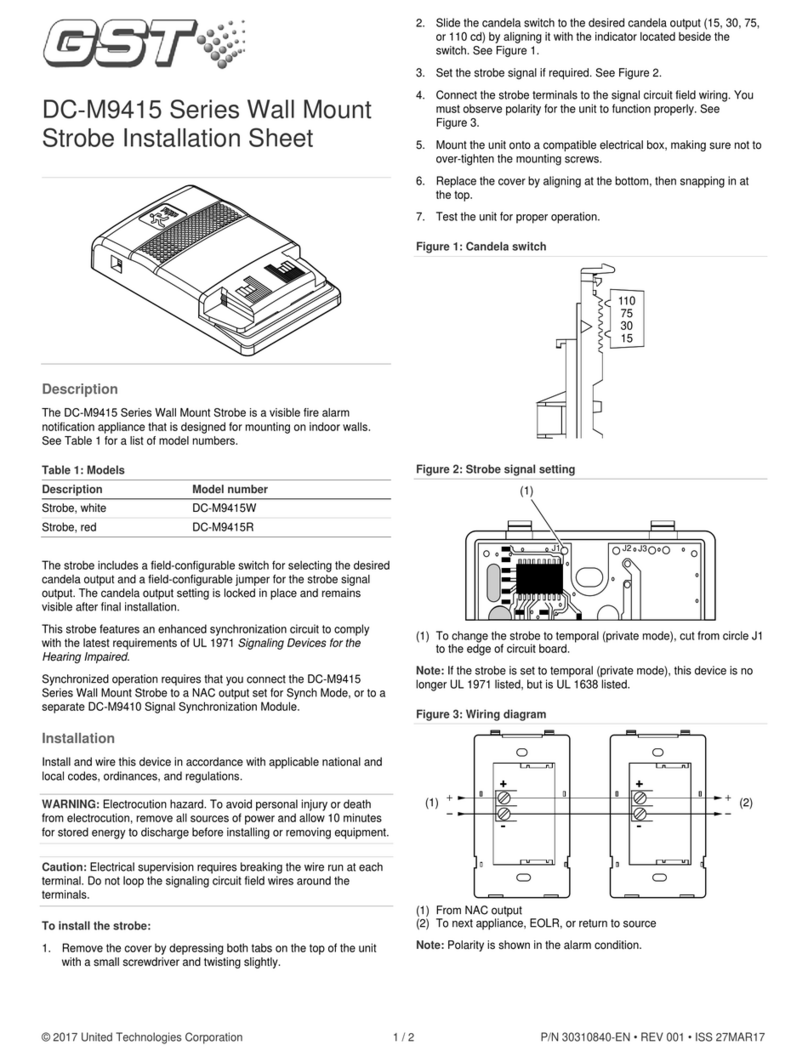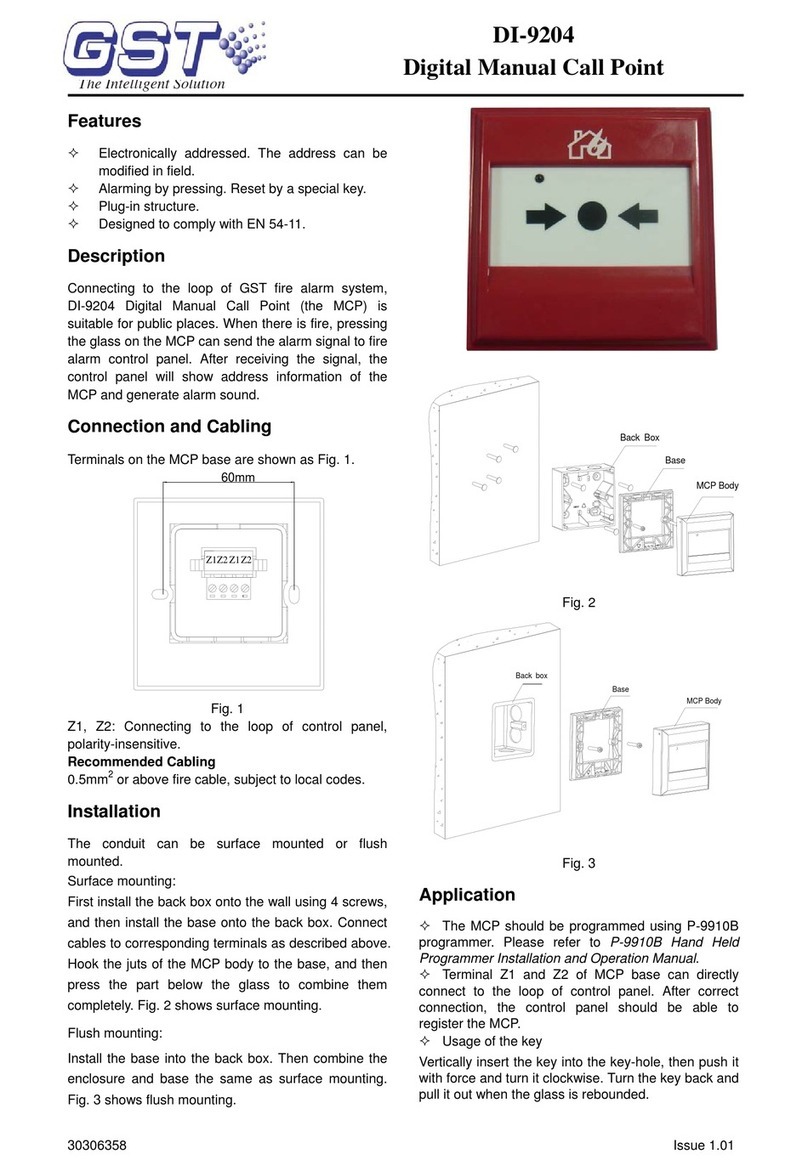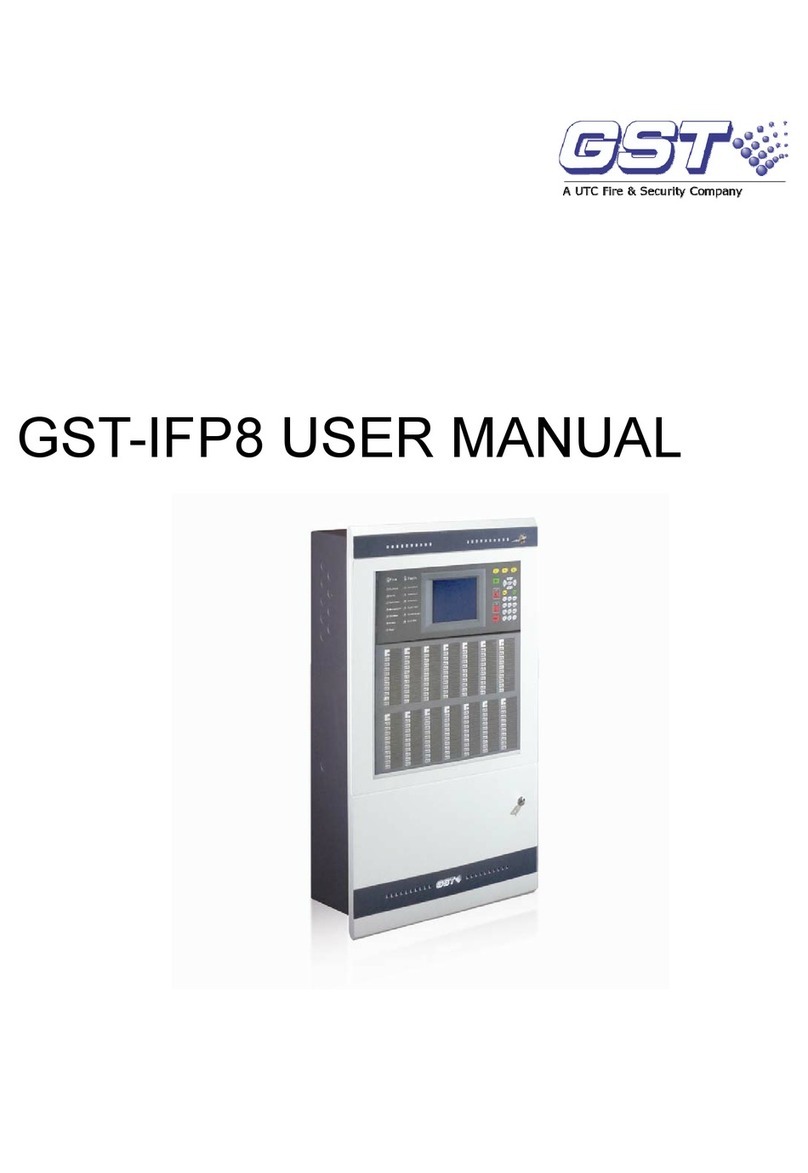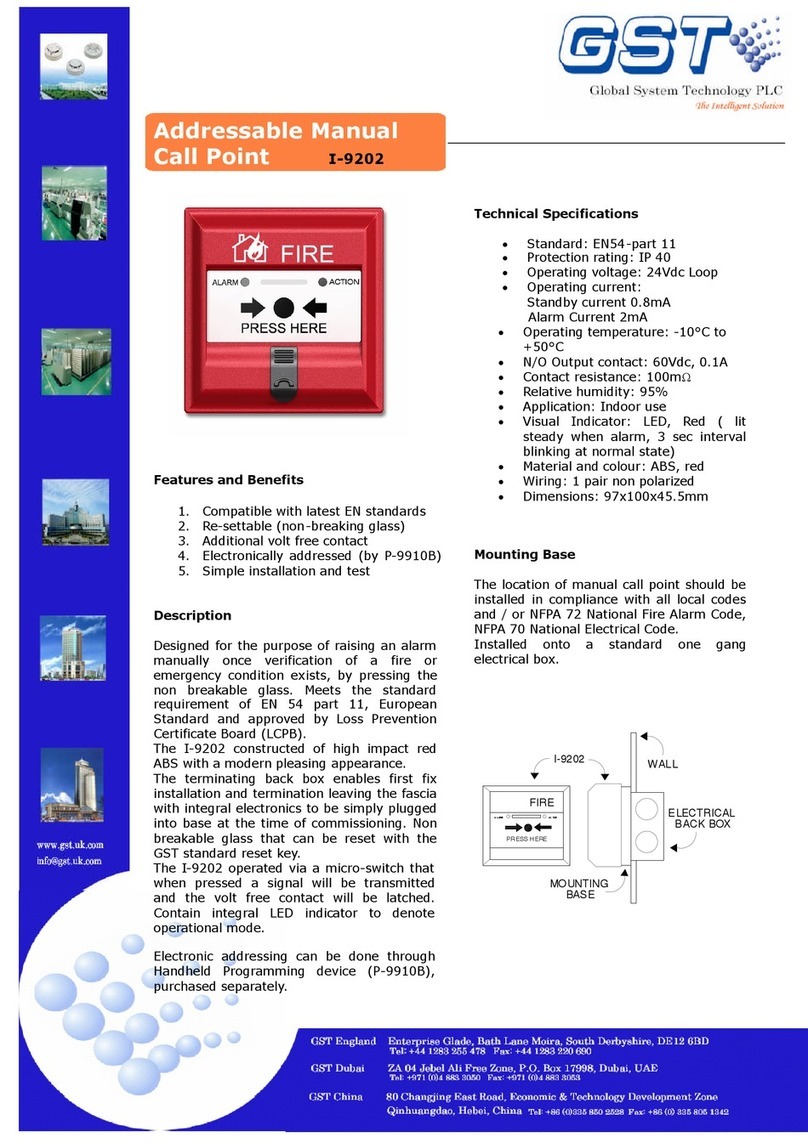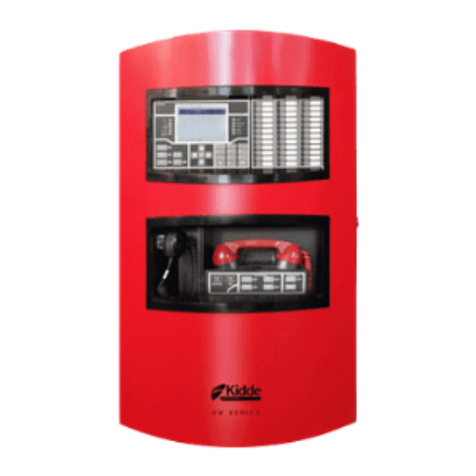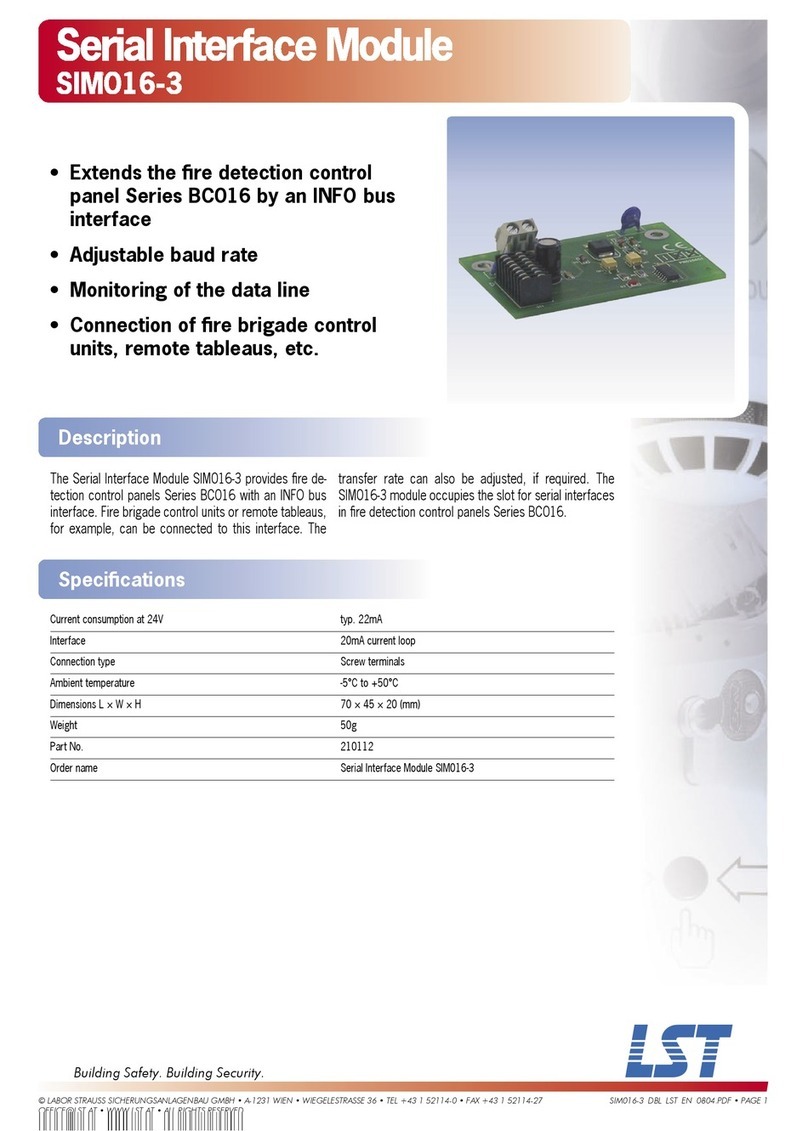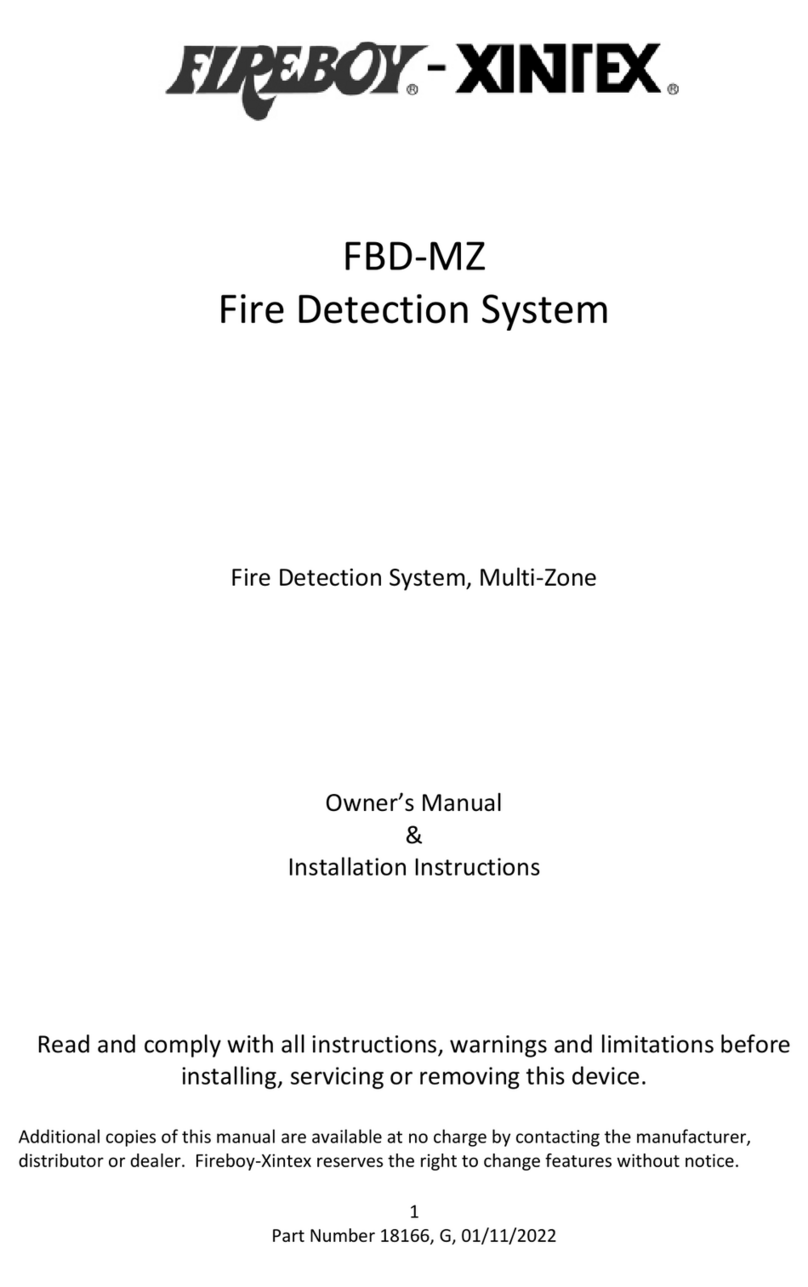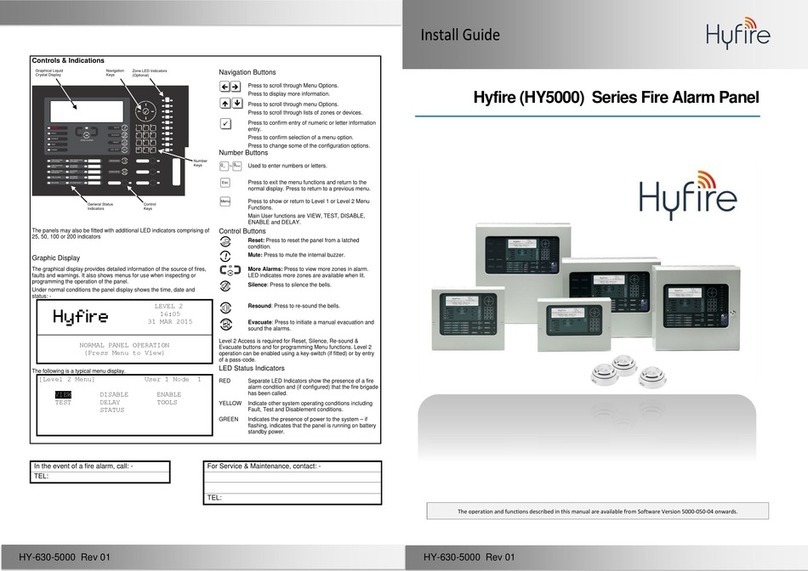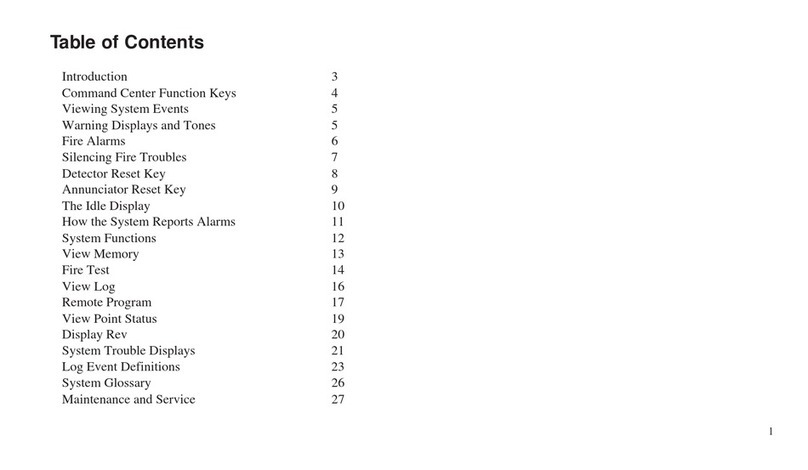
GST-MNA2C/GST-MNA2F Network Annunciator
Installation and Operation Manual
Page I
CONTENTS
Installation Precautions ...............................................................................................1
1Product Introduction.............................................................................................2
1.1 Inventory................................................................................................................2
1.2 Standard Features.................................................................................................2
2Technical Specifications.......................................................................................3
2.1 Electrical Specifications.........................................................................................3
2.2 Communication Loop Parameters ........................................................................3
2.3 Dimensions............................................................................................................3
3Installation..............................................................................................................4
3.1 Component Inspection..........................................................................................4
3.2 Install the Cabinet..................................................................................................4
3.3 Start-up Check.......................................................................................................6
3.4 External Connection..............................................................................................7
3.4.1 Power Connection-Class B.......................................................................7
3.4.2 Network Connection-Class A....................................................................7
4Indication & Control..............................................................................................8
4.1 LED Indicators.......................................................................................................8
4.2 Functional Keys...................................................................................................10
4.3 Service / Program Keys: .....................................................................................10
4.4 User Interface......................................................................................................11
5Operations............................................................................................................13
5.1 Setup on the annunciator....................................................................................13
5.1.1 Basic Setting...........................................................................................13
5.1.2 Advanced Setting....................................................................................15
5.2 Programming the annunciator Through GstNDef Defining Tool.........................16
5.2.1 Download thru USB interface .................................................................16
5.2.2 Download thru Ethernet interface...........................................................16
5.3 User Setup ..........................................................................................................17
5.3.1 Soft keyboard Setup ...............................................................................18
5.3.2 Display Setup..........................................................................................18
5.3.3 Clock Setup.............................................................................................18
5.3.4 Print Setup ..............................................................................................19
5.3.5 Day/Night Mode ......................................................................................20
5.3.6 Language Setup......................................................................................21
5.3.7 Project Information..................................................................................21
6Operating Instructions........................................................................................22
6.1 Panel Control Keys .............................................................................................22
6.1.1 MANUAL ALARM (User password)........................................................22
6.1.2 ACKNOWLEDGE (User password)........................................................22
6.1.3 SILENCE ALARM (User password)........................................................22
6.1.4 SILENCE BUZZER (User password)......................................................22
6.1.5 All RESOUND (User password) .............................................................23
6.1.6 RESET (User password).........................................................................23
7Default Programming..........................................................................................23
Appendix A Basic System Connection ....................................................................24


